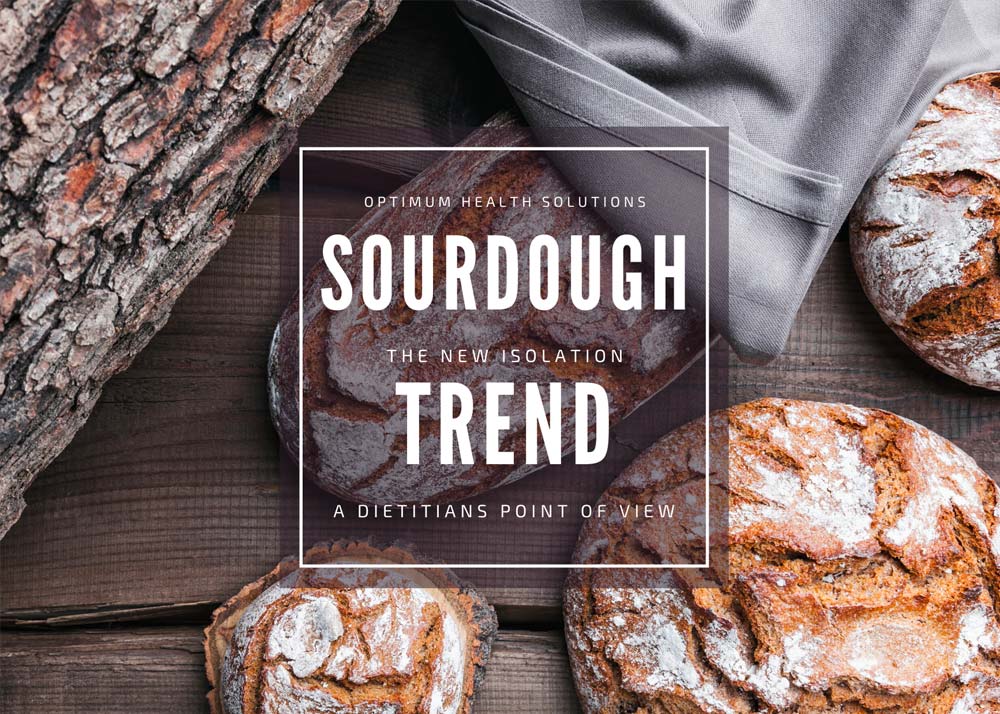During the time of Coronavirus, there seems to be one thing uniting people around the world (other than the forced isolation and increased frequency of handwashing), and that is Sourdough bread.
It seems that my social media is filled with posts from people attempting to make sourdough at home, so today we are going to look at what is the difference between normal bread and sourdough, and is it any good for you?
What is it?
Sourdough is a traditional style of bread made by fermenting dough using naturally occurring bacteria (lactobacilli) and yeast, instead of the usual bakers’ yeast. As the name suggests this fermentation process gives the loaf a slightly sour flavour making it a great alternative for people who prefer savoury foods.
The popularity of sourdough during isolation appears to have stemmed from the fact that sourdough requires only 3 ingredients; flour, water and salt. The process involves making a “starter” of flour and water, which over a few days uses the yeasts and lactobacilli which are naturally occurring in the flour and air, and ferments these into a useable “culture”. Like with any fermented product (think beer), the bacteria and yeast create gas bubbles (carbon dioxide), so that when this starter is mixed with more flour and baked, we get a nice crusty loaf of bread with little holes which are what makes bread light and fluffy.
While this seems quite simple, the process of creating the starter can get quite messy and labour intense so if you’re new to sourdough, I would recommend grabbing a loaf from your local bakery first before your commit to making your own.
Is it healthy?
The bacteria used in Sourdough bread produce a byproduct of Lactic acid, which as well as giving the bread its unique sour taste, also gives Sourdough bread a lower glycemic index (GI) than regular loaves of bread meaning that it has less of an impact on blood sugar levels, which is great news for anyone with diabetes or pre-diabetes. This can also mean that sourdough bread can be better at regulating appetite, as people tend to get feel less hungry when their blood sugar levels are more stable.
In addition to these impacts on GI, the lactic acid also act as a natural preservative meaning that sourdough can last longer than regular bread without additives.
However, like normal bread, wholemeal varieties of sourdough are more nutritious than white varieties as they contain more vitamins, minerals and fibre than the more processed white flour-based counterparts.
One downside of sourdough is that due to the rustic nature of sourdough loaves, they tend to be larger and round or oval-shaped which can make portion control difficult for those who are counting carbs or calories.
So bottom line, like everything else in life Sourdough bread has some great qualities but also a few things to be cautious of. Eat it in moderation, and if you feel like making your own, do your research first so you know what you’re getting into!








